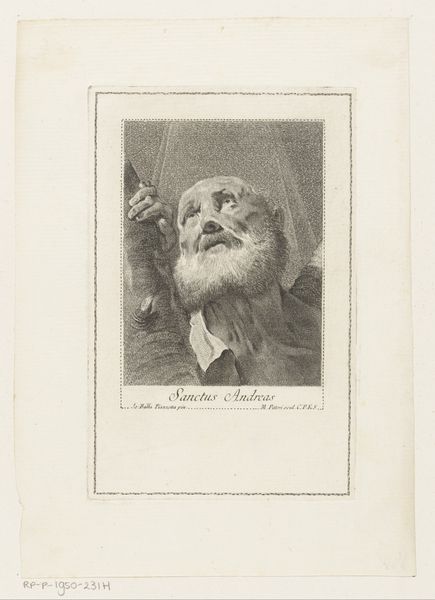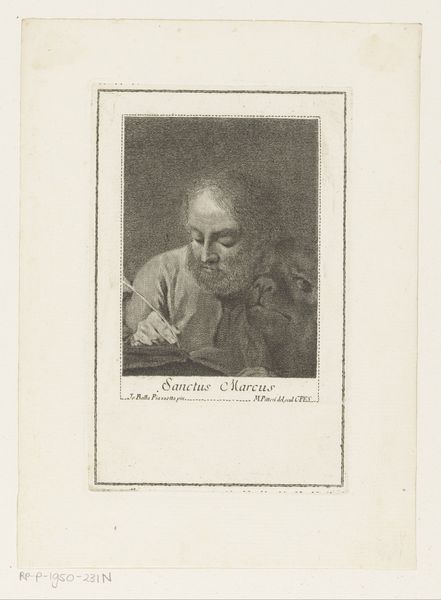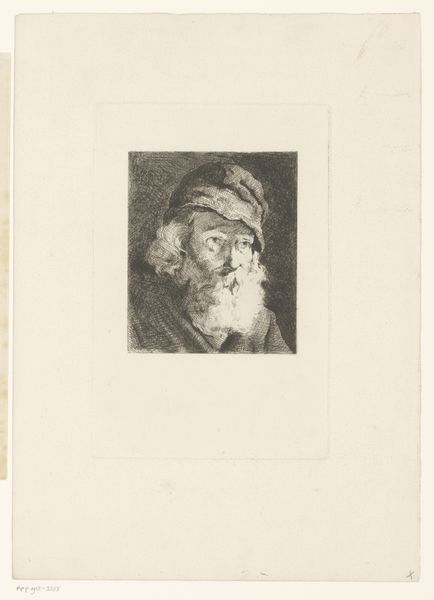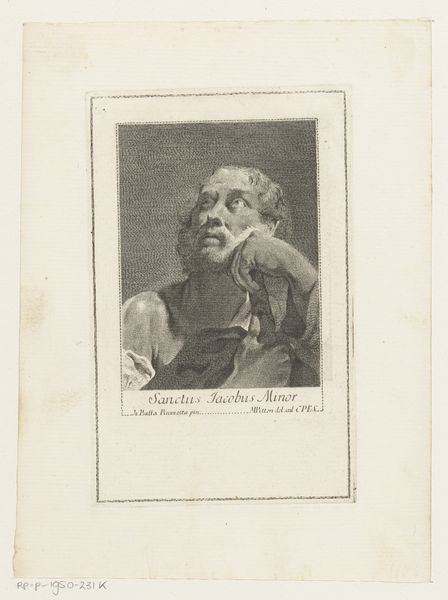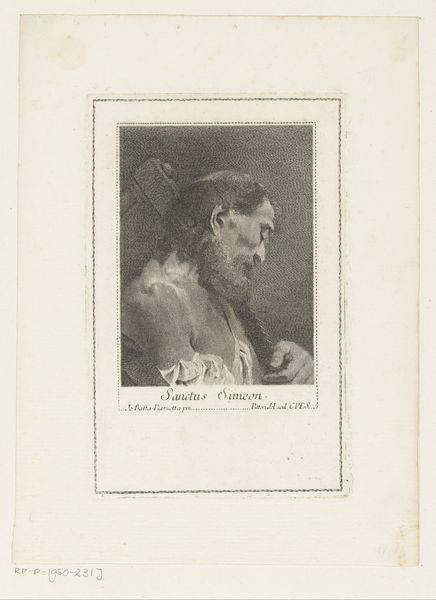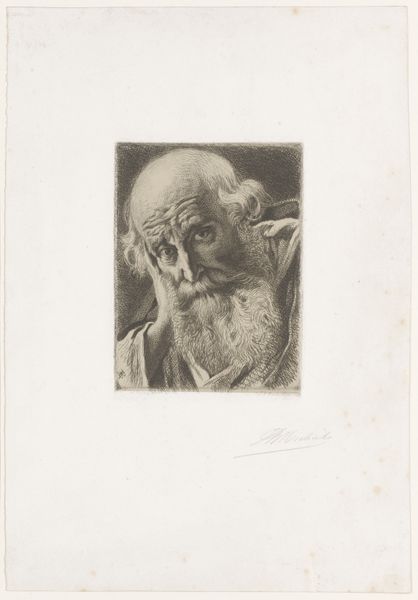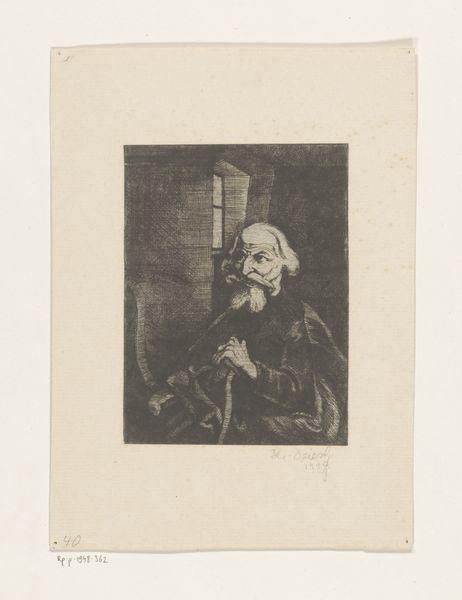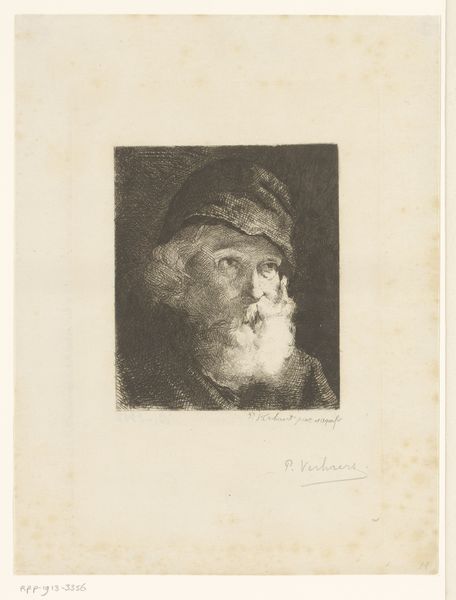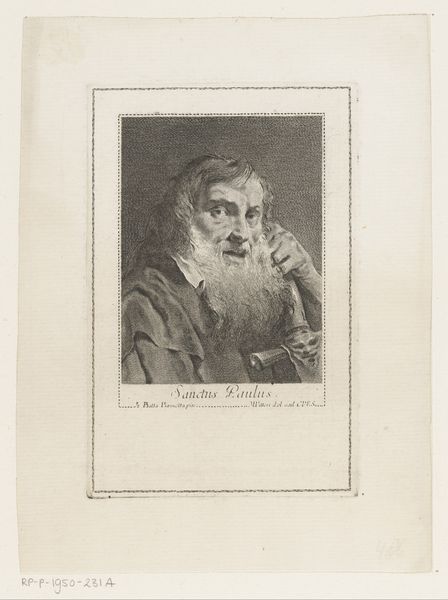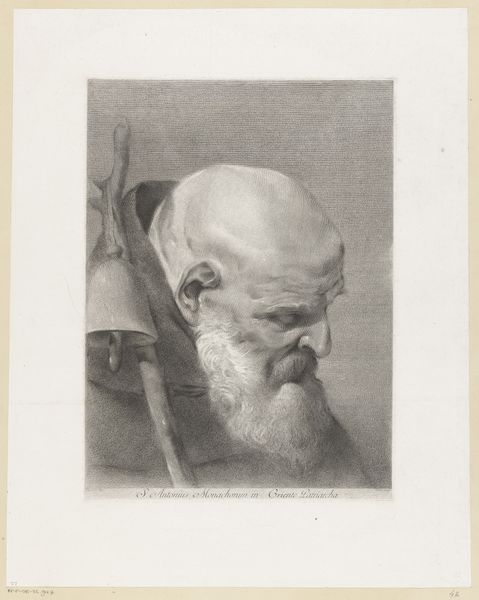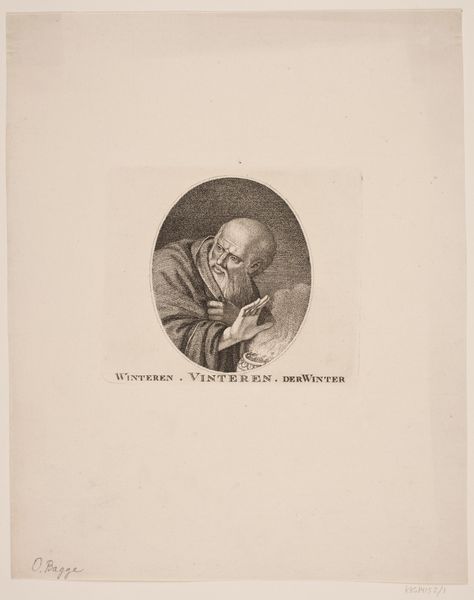
print, engraving
#
portrait
#
baroque
# print
#
history-painting
#
engraving
Dimensions: height 161 mm, width 104 mm
Copyright: Rijks Museum: Open Domain
Editor: Looking at Giovanni Marco Pitteri's "Apostel Petrus," created sometime between 1712 and 1786 using engraving techniques, the figure's upward gaze creates such a strong feeling of devotion, almost desperation. What can you tell me about this depiction from a historical perspective? Curator: This image speaks volumes about the social and religious landscape of its time. The Baroque period was marked by the Catholic Church's efforts to reassert its authority. Images like these functioned as powerful tools of religious propaganda. How does Pitteri visually communicate Petrus’ importance and role in society, would you say? Editor: The keys are so prominent. He’s holding them right in front of him. I know they're symbolic of St. Peter's role as the gatekeeper of Heaven. Is there more to it? Curator: Exactly. But consider this further. Think about the original context for this engraving – most likely a printed book or a devotional print. What kind of message is conveyed to its viewers? This image reinforces Peter's unique access and ability, making the Church and its power feel more real to those engaging with it. What effect do you imagine that had on society then? Editor: That makes sense. The engraving process itself means it could be widely distributed, embedding this vision of St. Peter's authority across a large population. I guess I never considered that the art was as much about that as the artist’s self-expression. Curator: Indeed! The art becomes part of the machinery to bolster socio-political or cultural ideology. Examining who creates, disseminates, and consumes the art sheds light on how it operated in the real world and within specific communities. Editor: It’s fascinating to realize that seemingly devotional art served such a calculated purpose, acting more like strategic PR. Thanks!
Comments
No comments
Be the first to comment and join the conversation on the ultimate creative platform.
